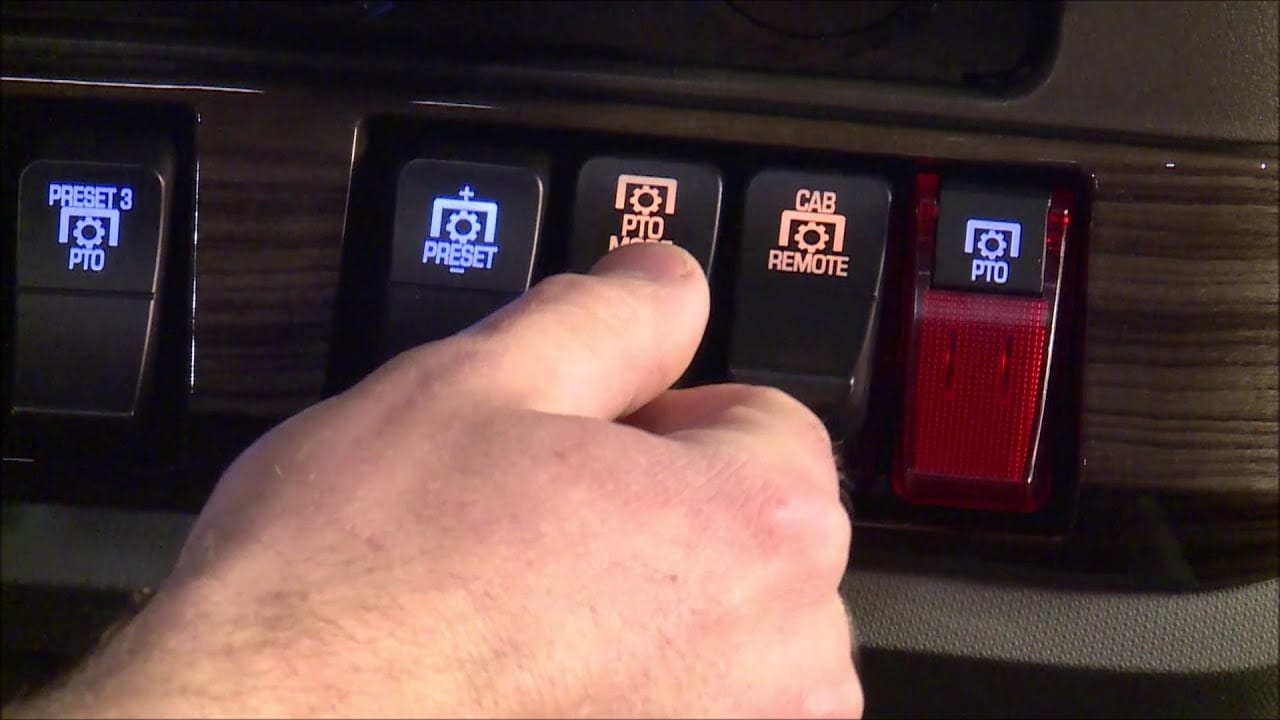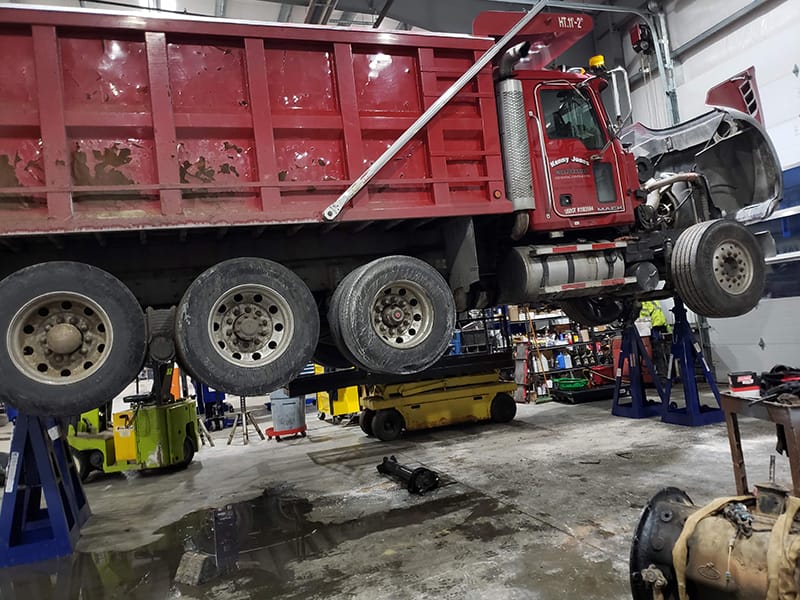- The Upfit Insider
- Posts
- Dump Truck Driver Burnout: The Hidden Cost of Bad Specs
Dump Truck Driver Burnout: The Hidden Cost of Bad Specs
How poor upfit choices, financial pressure, and downtime wear down even the toughest dump truck drivers.

Dump Truck Driver Burnout: The Hidden Cost of Bad Specs
Most fleet managers think burnout comes from long hours or low pay. It doesn’t.
It comes from bad trucks — and the pressure that comes with running them.
When your workers deal with slow PTOs, stuck tarp kits, and loud cabs every shift, the hours feel longer, and the job feels pointless.
That’s dump truck driver burnout. It’s a combination of being physically tired, mentally drained, and emotionally disconnected. This burnout is causing many good drivers to leave the industry.
What’s Really Burning Out Dump Truck Drivers
Burnout isn’t about attitude; it’s about specs, schedules, and silence.
Burnout in dump truck operations isn’t just about endurance. It’s about specs, schedules, and silence — the kind that comes from feeling unseen.
Picture this:
A 20-truck municipal fleet running year-round contracts.
Tight deadlines, five-day paving routes, and salt runs in winter.
Electric PTOs spec’d to save $800 each — overheating weekly.
Drivers pulling 12-hour shifts, paid by the load, skipping meals to stay ahead.
Three quit before spring. Not for better pay — but because the trucks and the system worked against them.
Burnout doesn’t hit all at once. It builds — every extra minute tarping by hand, every delayed PM, every cab rattle that goes ignored.
If you want to understand how much these trucks should safely haul before you overwork them, read How Many Tons Does a Dump Truck Hold? (2025 Charts, Asphalt Weights & Legal Limits). Overloading isn’t just a DOT issue — it’s a burnout multiplier.

It’s Not the Hours — It’s the Hardware
When the truck fights the operator, stress spikes and productivity collapses.
When the truck fights the operator, every task multiplies in stress and time. Here’s where burnout really starts:
Problem | Operator Effect | Fleet Impact |
|---|---|---|
Undersized PTO or slow hydraulics | Slower cycles, more idling | ~+30% fuel and time per shift |
Manual tarp kits | Constant climbing, cold-weather injuries | Higher workers comp costs |
Poor cab ergonomics | Neck, back, and hand fatigue | Shorter operator retention |
Loud hoists and rattling beds | Mental fatigue | Missed PMs, reduced focus |
Overweight specs | Constant DOT stops and fines | Lost hours, driver frustration |
Quick math: A fleet running 8 jobs/day drops to 6 jobs/day because of slow hydraulics. At $1,800/job, that’s $3,600 lost per day — $72K a month. All because of “budget” PTOs.
The Human Side: Fatigue, Stress, and the Spiral
Burnout is physical, emotional, and financial — and it feeds on bad specs.
Dump truck driver burnout isn’t just mechanical — it’s physical, emotional, and financial. It shows up as dump truck driver fatigue, cynicism, and a quiet resentment toward every shift.
Key Causes of Burnout
Extended Hours: Irregular, 10–14-hour shifts destroy recovery time.
Isolation: Long hours away from family lead to disconnection and apathy.
Pressure to Earn: Pay-by-load models reward overwork and penalize rest.
Sedentary Lifestyle: Sitting all day wrecks posture and energy.
Safety & Workload Stress: Traffic, deadlines, and equipment strain compound into real dump truck driver stress.
Signs It’s Happening
Chronic fatigue and sleep problems
Feeling annoyed or negative about work
Missed PMs or careless mistakes
Withdrawal from coworkers or dispatch
Reluctance to start shifts
Every one of those symptoms compounds the mechanical fatigue the truck already causes. It’s a vicious cycle — bad specs accelerate burnout, burnout accelerates downtime.
Why Do Dump Truck Drivers Quit?
They don’t quit companies — they quit trucks.
Ask anyone in the field why do truck drivers quit, and you’ll hear the same story: they get tired of using bad equipment, working irregular hours, and having leaders who never come to see the real issues.
Every operator knows when a truck was spec’d by accounting instead of someone who’s ever run a route. The signs are obvious:
No power mirrors.
Switches out of reach.
Controls built for installers, not drivers.
Cab noise so bad you can’t hear your spotter.
That’s not preference — it’s fatigue. And fatigue turns into resentment.
Fleet managers often blame “labor shortages,” but this isn’t about hiring — it’s about building trucks that don’t break people.

The Real Cost of Burnout for Fleets
Burnout destroys productivity, morale, and safety — and it’s expensive.
But in the dump world, the real cost is lost experience and morale.
When your best driver leaves, others follow. Productivity dips. PM schedules slip. Trust erodes. And because burnout isn’t tracked like fuel or maintenance, it becomes the silent expense killing fleet profitability.
Burnout also affects safety: fatigued drivers are more likely to be involved in preventable accidents. The physical and mental exhaustion behind the wheel doesn’t just lower morale — it raises liability and increases dump truck driver turnover across the board.
How to Prevent Burnout (Spec Smarter, Not Harder)
You beat burnout by building trucks that help — and running schedules that respect humans.
You can’t fix burnout with pizza parties. You fix it with better specs and smarter management.
1) Upgrade What Operators Actually Touch
Hydraulic controls: Use proportional cab-mounted valves.
Tarps: Electric or hydraulic systems save ~15 minutes per load.
Hoists: Use matched systems (Mailhot or Hyva) for smooth, predictable cycles.
2) Focus on Ergonomics and Noise
Add sound-deadening mats under the cab.
Install air-ride seats, even on smaller chassis.
Choose poly fenders to reduce corrosion and rattling.
3) Prioritize Downtime Prevention
Fleets using predictive PM systems see less turnover than paper-log fleets. If your operation includes mixed vehicles, apply the same philosophy to your lighter-duty fleet too — see Box Truck Buyer’s Guide: Dimensions, Specs, Costs & Liftgates (2025) to learn how smart specs translate across platforms.
4) Build Policies That Prevent Burnout
The best way to prevent truck driver burnout isn’t bonuses — it’s predictable schedules, fair pay, and including drivers in spec decisions. The more they feel heard, the less they’ll feel worn out.
Strategies Beyond the Shop
Health habits and human connection keep performance high.
For Drivers
Prioritize Rest: Take scheduled time off and real breaks between shifts.
Maintain Health: Hydrate, move, and eat like you plan to do this long-term.
Stay Connected: Use tech to keep up with family even during long stretches.
Mindfulness Helps: Five minutes of deep breathing can reset focus after a stressful load.
For Employers
Build a culture where drivers can talk about burnout without being labeled “soft.”
Offer consistent home time, predictable schedules, and driver mentorship.
Equip every truck with ergonomic, safety-first specs — not cost-cut ones.
Burnout recovery isn’t just HR work — it’s operational strategy. A healthy driver is a safer, more productive one.
Top Spec Upgrades That Boost Morale
Small, operator-first upgrades pay for themselves fast.
Upgrade | Cost | Payback | Benefit |
|---|---|---|---|
Electric tarp kit | $2,100 | < 4 months | Safety + efficiency |
High-flow PTO (vs. standard) | +$600 | < 2 months | ~25% faster cycles |
Cab insulation & air-ride seat | $1,400 | 6–8 months | Reduces operator fatigue |
Automatic greasing system | $1,000 | ~5 months | Less downtime, longer component life |
When drivers see management investing in smarter specs, they return the favor with care, pride, and longer tenure.
Hypothetical Case Study: One Spec Change That Turned It Around
Listen to operators, upgrade the friction points, and the metrics move.
Let’s say a Northeast DPW was facing 25% turnover every winter. Drivers complained about cold tarps, slow hoists, and deafening noise in their 10-yard dumps.
After upgrading to powered tarps, sound-dampened cabs, and air-ride seats:
Injury claims dropped 60%.
PM compliance improved 22%.
Turnover fell to nearly zero the next year.
Same routes. Same pay. Just trucks that helped, not hindered.
That’s not fantasy — that’s what happens when the people speccing trucks listen to the ones driving them.
What Is It Like Being a Dump Truck Driver Today
Tough, honest work — if the truck is built to help.
Ask any operator — the job isn’t easy. The early mornings, the salt dust, the unpaid wait time — they can handle that. What wears them down is being handed equipment that makes the job harder.
The ones who stay? They’re running trucks that feel built for them.
If you’re new to the upfit game or wondering what is it like being a dump truck driver, start with What is an Upfit on a Work Truck? — it breaks down how every upfit choice shapes driver experience and fleet performance.
FAQs: Dump Truck Driver Burnout
Q: What causes dump truck driver burnout most?
Long hours, isolation, financial pressure, and poorly spec’d trucks that make every shift harder.
Q: How do you prevent dump truck driver burnout?
Balance rest, ergonomics, and smart specs. Build trucks that make work easier, not heavier.
Q: Why do truck drivers quit?
Because nobody listens — to their feedback, to their fatigue, or to the way the truck feels after 12 hours in the seat.
Q: What’s the impact of burnout on safety?
Burnout increases accidents and downtime. Fatigued operators are slower, less focused, and more likely to make costly mistakes.
Wrap-Up
Respect the person in the seat and the numbers will follow.
Dump truck driver burnout isn’t solved with slogans or snacks. It’s solved with specs, schedules, and support systems that respect the person in the seat.
If you manage a fleet, remember this: you can’t run reliable trucks without reliable people — and you can’t keep reliable people without reliable specs.
Question:
What’s one change you could make today that would make your drivers’ jobs easier tomorrow?
—
Leyhan
Founder, The Upfit Insider


Reply